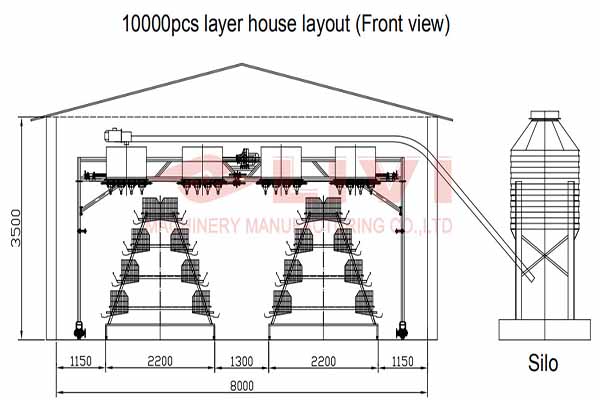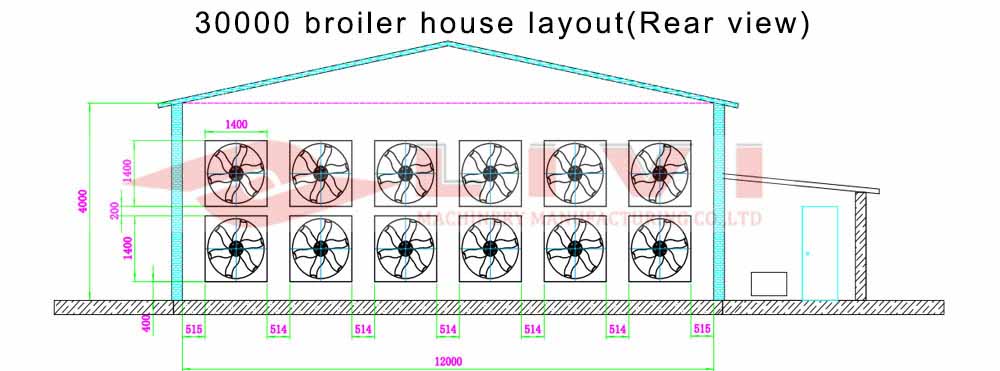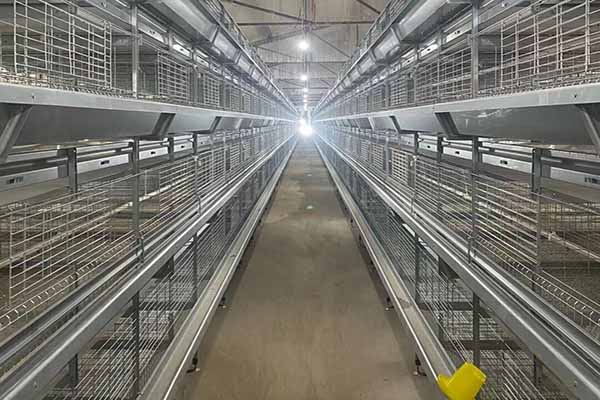Best Chicken House Layout for Large Farms: Key Considerations and Tips
Optimizing the layout of your chicken house is crucial for the health and productivity of your farm. For large farms, the design can significantly impact efficiency and profitability. This article outlines the best practices for chicken house layouts tailored for large farms, ensuring you maximize your space and yield.

1. Space Utilization and Layout Design
Proper space utilization is vital. The recommended floor space for laying hens is approximately 2-3 square feet per bird. Roosters may require up to 5 square feet. Here’s a layout that can help you manage large numbers efficiently:
- Central Aisle: Keep a clear central aisle for ease of movement and access to all pens.
- Roosting Areas: Design elevated roosts to prevent pecking and to promote good sleep habits.
- Nesting Boxes: Include nesting boxes on the sides of the central aisle for laying hens.
- Feed and Water Stations: Strategically place feeders and waterers for efficient feeding and reduced waste.
- Ventilation: Ensure proper ventilation to keep the chickens cool and reduce ammonia levels.
According to the National Chicken Council, large-scale farms typically need a layout that allows for easy management of up to 40,000 birds per house.
2. Environmental Control
Temperature and humidity are critical factors for chic ken health and laying performance. The ideal temperature for laying hens is between 70°F to 75°F. A well-designed house will include:
ken health and laying performance. The ideal temperature for laying hens is between 70°F to 75°F. A well-designed house will include:
- Heating and Cooling Systems: Automated systems to maintain the right temperature year-round.
- Insulation: To prevent heat loss during cooler months and keep the house cool in summer.
- Humidity Control: Using moisture eliminators to keep the air dry and reduce disease risk.
3. Biosecurity and Health Management
Biosecurity measures are essential to prevent the spread of diseases in large flocks.
- Sanitization Protocols: Regular cleaning and disinfection of the house and equipment.
- Isolation Areas: Designate areas for sick birds to prevent the spread of disease.
- Staff Training: Regular training for farm workers on biosecurity and disease management.
Research conducted by the Poultry Science Association shows that implementing these measures can reduce the incidence of disease by up to 70%.
4. Efficient Equipment and Automation
Using advanced equipment and automation can greatly improve efficiency:
- Automatic Feeders and Waterers: To ensure consistent feeding and reduce labor costs.
- Egg Collectors: To automate the egg collection process and reduce manual labor.
- Monitoring Systems: To track bird health and productivity remotely.
Data from the Farm Journal indicates that automated systems can increase productivity by 20%.
By following these best practices, large farms can create an optimal environment for their chickens, leading to improved health, productivity, and profitability.
For more detailed information and a free chicken house layout design, please feel free to leave a comment below or contact us directly. Let LIVI Mechanical assist you in making your farm more efficient and profitable.





